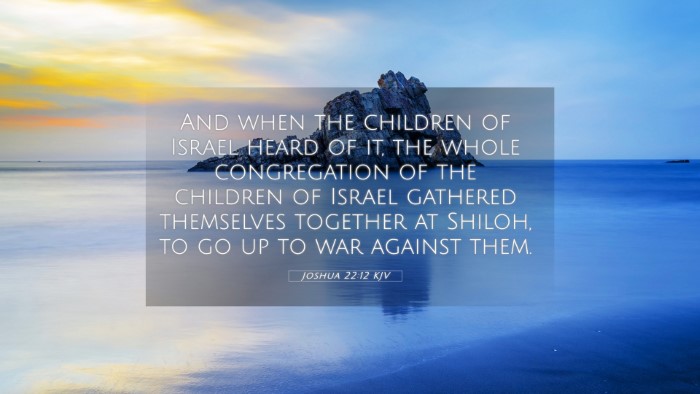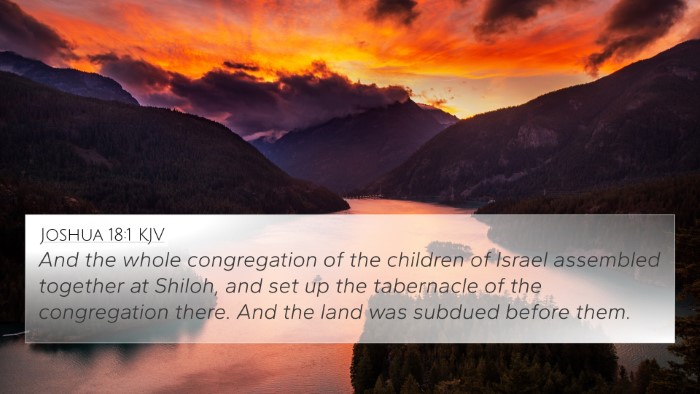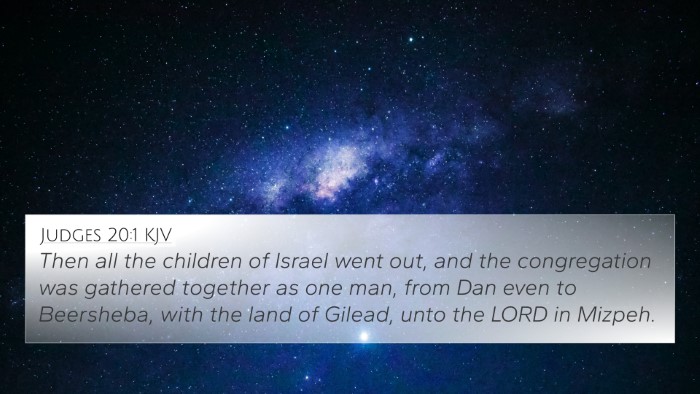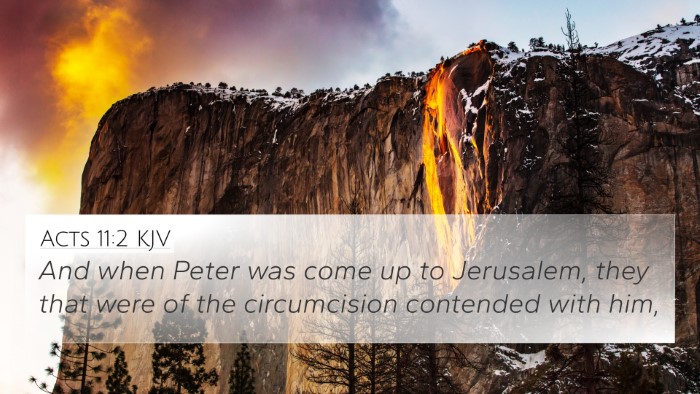Understanding Joshua 22:12
Joshua 22:12 states: "And when the Israelites heard that they had built the altar on the border of Canaan at Gilead, they assembled together against them to go to war."
This verse offers a crucial moment in Israel's history, reflecting the complexities of obedience, unity, and misunderstanding within the community of God’s people.
Overview of the Context
The backdrop of Joshua 22 is the allocation of land to the tribes of Reuben, Gad, and the half-tribe of Manasseh. After fulfilling their military commitments in the Conquest of Canaan, these tribes returned to their territory on the eastern side of the Jordan River. Their building of an altar sparked serious concern among the other Israelites, highlighting themes of loyalty and proper worship.
Thematic Connections
This verse resonates with several key themes in Scripture:
- Unity among God’s People: The immediate assembly of the Israelites indicates a strong commitment to collective faith and concern for potential idolatry.
- Misunderstanding and Miscommunication: The swift action taken to confront the eastern tribes speaks to the dangers of assumptions and the need for dialogue.
- Worship and Altar Significance: Altars in the Bible hold deep spiritual significance and represent covenant relationships with God.
Commentary Insights
Matthew Henry's Commentary
Matthew Henry highlights the zealous nature of the Israelites, emphasizing the importance of unified worship and the dangers of divided loyalty. He suggests the altar represented not rebellion but a reminder of shared identity among the tribes.
Albert Barnes' Notes
Barnes notes that the actions of the eastern tribes might have been misinterpreted as a break from the covenant. He stresses the need for careful communication and the fact that misunderstandings can lead to unnecessary conflict among God’s people.
Adam Clarke's Commentary
Clarke elaborates on the intention behind the building of the altar, interpreting it as an effort to maintain religious identity and connection despite geographic separation. He also discusses the importance of seeking clarification before jumping to conclusions.
Bible Verse Cross-References
Joshua 22:12 connects with various other Scriptures, deepening our understanding through comparative analysis:
- Exodus 20:24: God's instructions on building altars emphasizes proper worship.
- Leviticus 17:8-9: Warns against unauthorized worship practices.
- Deuteronomy 12:32: Cautions Israel against altering divine commandments regarding worship.
- 1 Samuel 6:19-21: The assembly of Israel to confront the Philistines mirrors their actions towards the eastern tribes.
- Ezra 4:1-2: A historical reflection on misunderstandings between returning exiles and those who remained.
- Acts 15:1-21: An example of early Church disputes over faith practice and doctrine.
- Ephesians 4:3: Encourages the unity of the Spirit in the bond of peace.
Practical Applications
By studying Joshua 22:12, followers are encouraged to:
- Practice open communication to avoid misunderstandings within the faith community.
- Recognize the significance of worship practices and to whom we direct our worship.
- Seek unity among diverse groups of believers while maintaining fidelity to God’s commands.
Conclusion
Joshua 22:12 serves as a poignant reminder of the vital importance of unity, communication, and adherence to God's instructions within the body of believers. It invites deep reflection on how misunderstandings can lead to conflict and the necessity for dialogue in the pursuit of understanding and peace.
SEO Keywords
This exploration of Joshua 22:12 aligns with various SEO keywords related to Bible study and textual analysis:
- Bible verse cross-references
- Connections between Bible verses
- Cross-referencing Biblical texts
- How to find cross-references in the Bible
- Bible verses that relate to each other
Additional Resources
For those interested in digging further into the methods of cross-referencing Biblical texts for deeper understanding, consider utilizing tools such as Bible concordances and comprehensive cross-reference guides.








